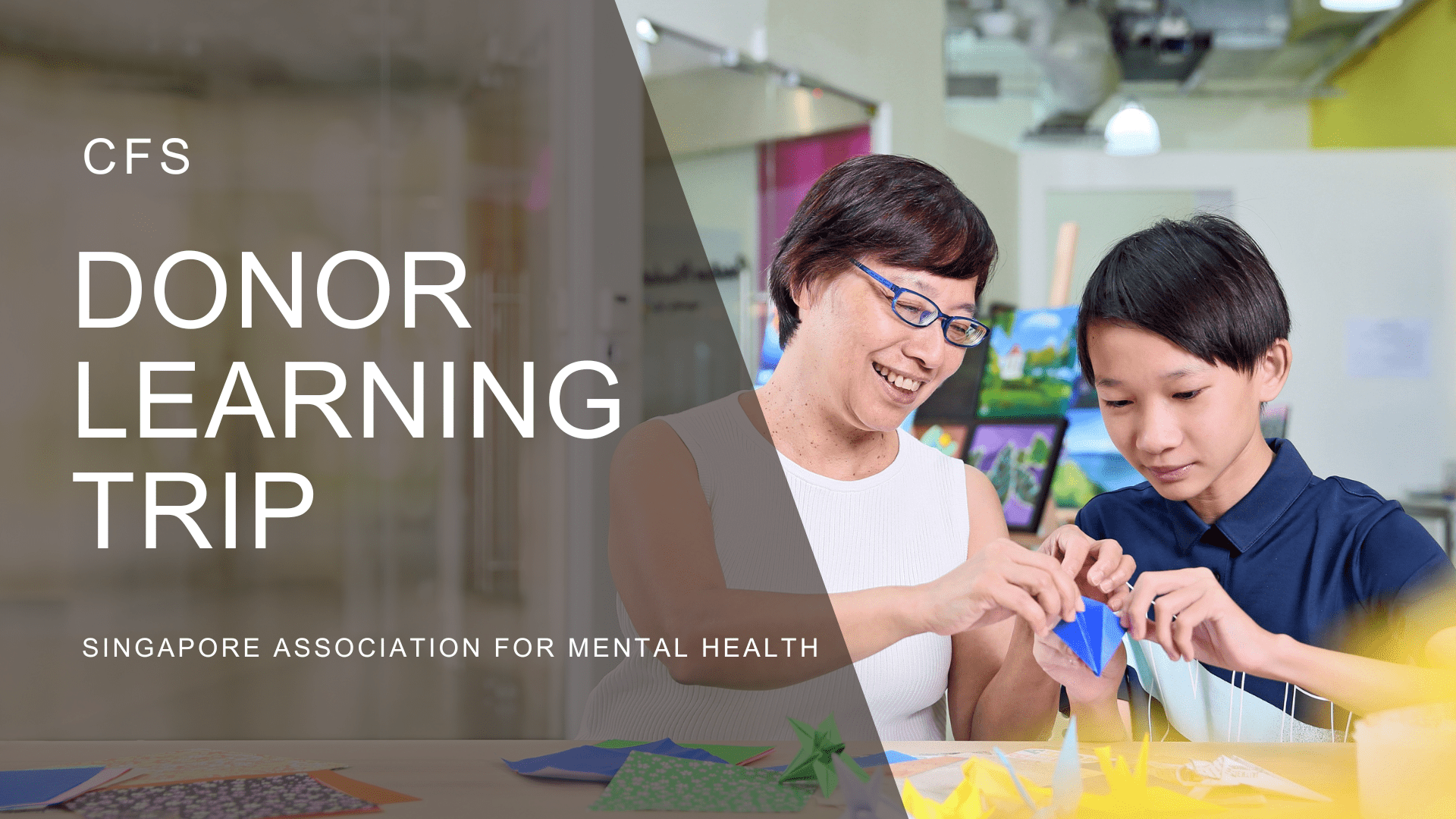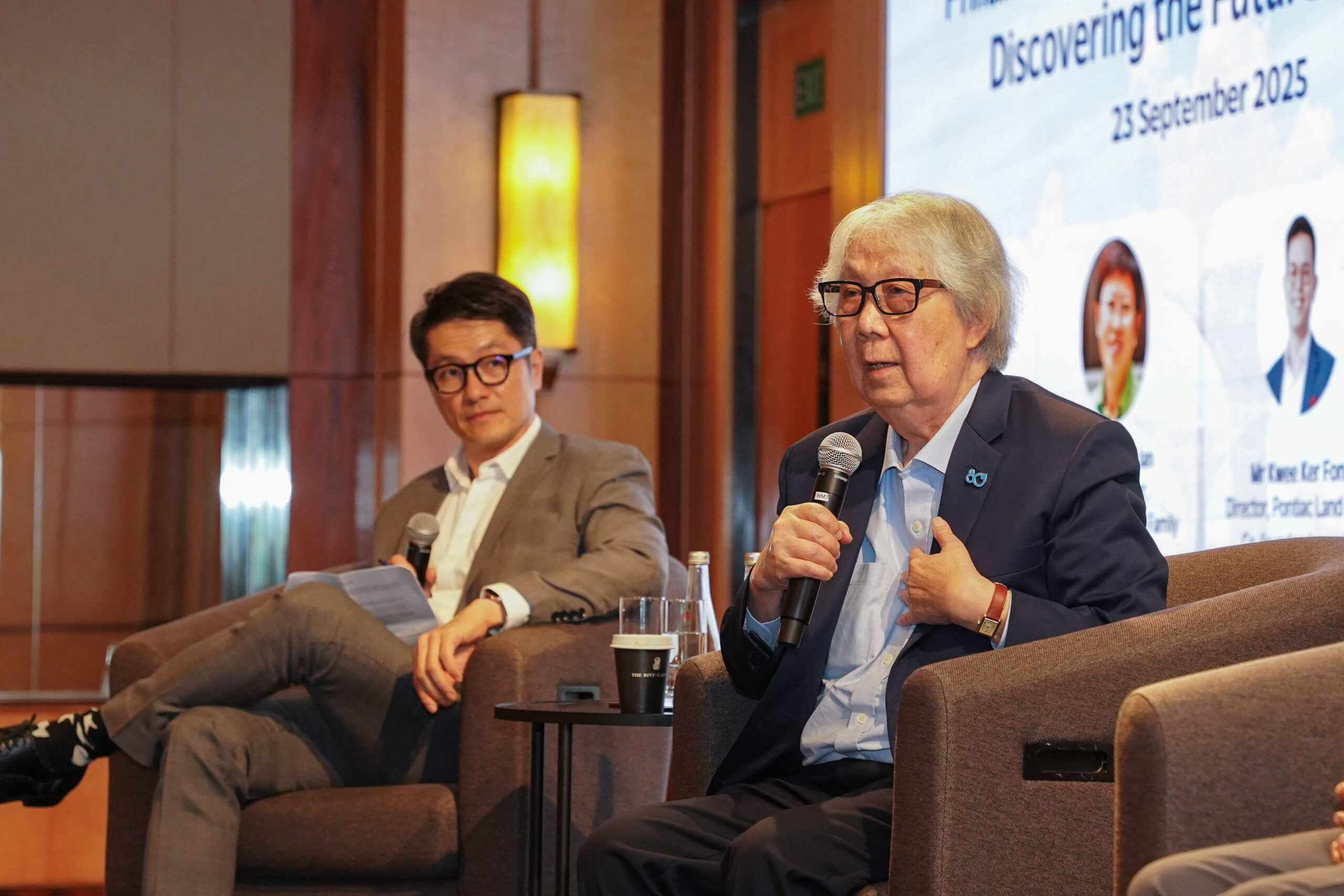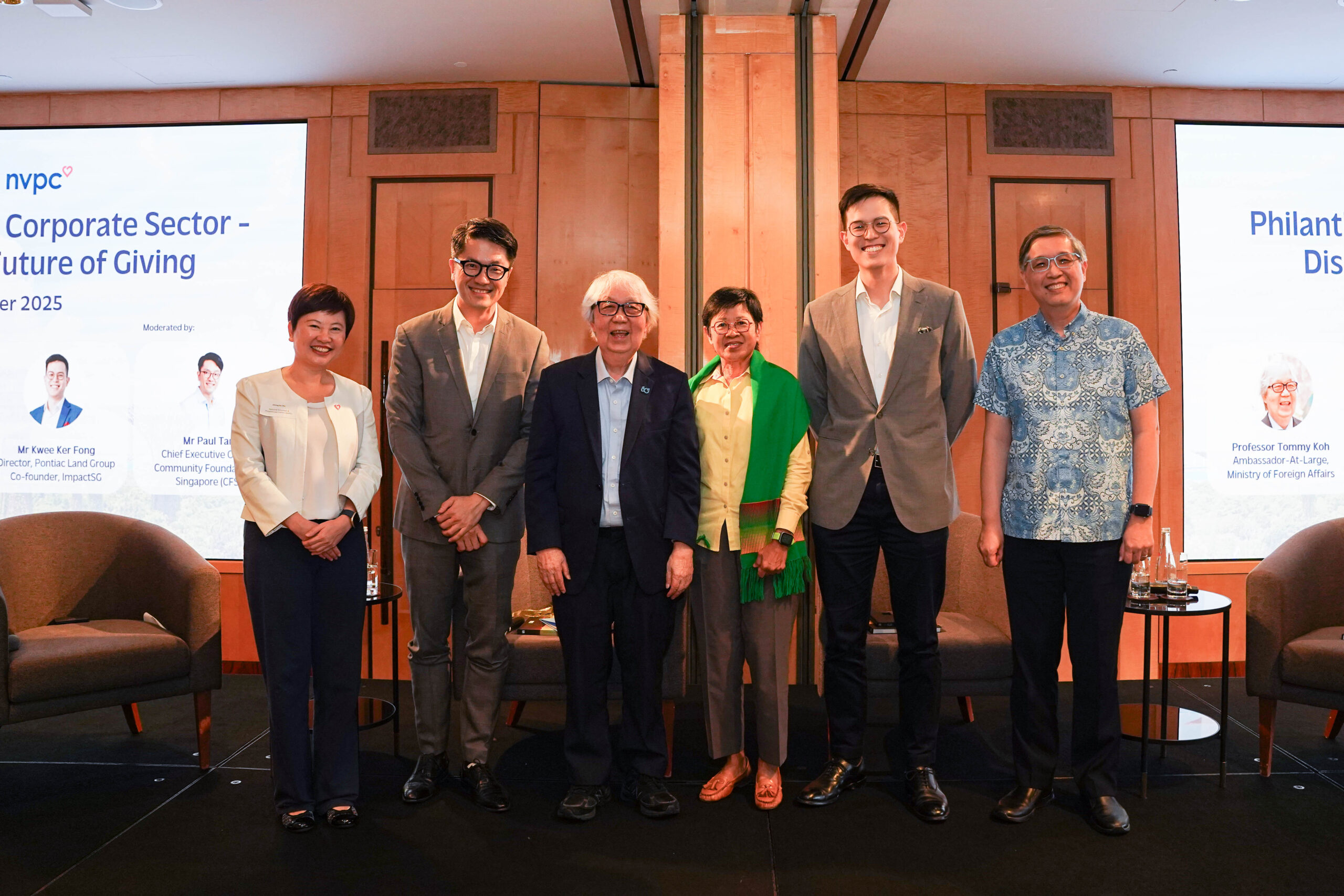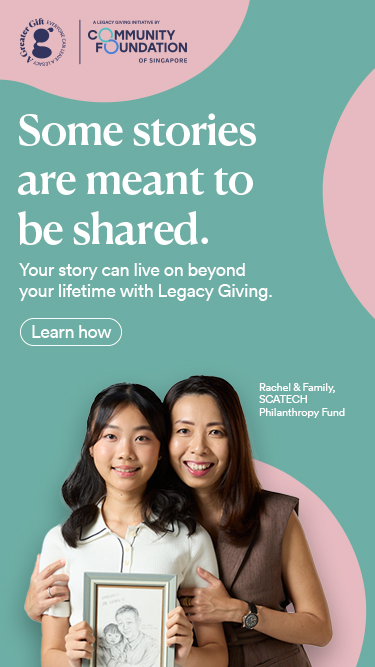Donor Learning Trip Series: The Art of Mental Well-Being


This initiative is part of CFS’s Donor Learning Trips, a series of engagement opportunities that enable donors to personally connect with charities and gain insights into how they support communities in need.
On the afternoon of October 19, 2023, 17 of our donors visited the Singapore Association for Mental Health (SAMH) and learned about the work they do.
Established in 1968, SAMH has been a stalwart in Singapore’s mental health community, improving the lives of persons with mental health issues through rehabilitation and reintegration.
SAMH Space2Connect is a newly established integrated wellness centre that provides mental health services to individuals aged 10 and above, families, and communities. The centre aims to empower clients, improving their well-being and walking with them on their road to recovery; while also serving as a collaborative hub for partners to come together and strengthen community mental health and resilience.
Confronting the realities of youth mental health
SAMH strives to destigmatise mental health amidst rising numbers of youths requiring support, encouraging them to seek help. Statistics highlight the severity of the issue, with suicide being the primary cause of death among 10 to 29-year-olds in Singapore in recent years. According to Samaritans of Singapore (SOS), out of the 476 suicides in 2022, 125 involved those in this age group. This is 13 more than in 2021 and the highest since 2000, which marks SOS’ earliest recorded data.
A substantial number of youths admit they are grappling with mental health symptoms, emphasising the pressing need for support. A recent study conducted by the National University of Singapore reported that one in 10, or 12% of adolescents met full diagnostic criteria for having at least one current mental health disorder. About one in three youth in Singapore reported internalising mental health symptoms such as depression, anxiety and loneliness, with those aged 14 to 16 reporting more serious symptoms. Meanwhile, roughly one in six young people said they experienced externalising mental health symptoms, such as hyperactivity, rule-breaking and aggression.
Through the afternoon, donors heard beneficiaries tell their stories and toured the space. They learnt how their contributions have supported youths particularly through SAMH YouthReach, which offers psychosocial support and recovery programmes for youths aged 12 to 21 facing emotional, psychological, and psychiatric issues. Mental health recovery is often not linear, and SAMH provides ongoing support for clients beyond treatment completion.
“It was inspiring to learn how our giving was making a difference to the lives of the youths supported by SAMH YouthReach, and to understand more about the good work that SAMH is doing,” said a donor from the CKY Foundation, who has been giving with CFS since 2022 after being introduced by the Economic Development Board.
“CFS has helped us work towards our philanthropic goals by making an impact across a range of causes and charities through the insights provided by our fund’s dedicated philanthropy advisor. It is heartening to witness the impact of one’s philanthropy in person, and to meet the people that you have helped.”
A place for community and self-expression
In addition to learning about SAMH’s programmes and services, donors had a chance to experience a therapeutic art activity for themselves as they joined two young adult clients of SAMH YouthReach in an interactive hands-on session. Through the fun, laughter and unleashed creativity, they discovered the potential of creative pursuits as a tool for promoting mental wellbeing.
With funding support, SAMH plans to expand their outreach further, with initiatives focusing on the impact of sleep, nutrition and movement on mental health.
We are grateful for the opportunity to meet the CFS donors, showcase SAMH facilities and programmes to them, and facilitate direct engagement with our beneficiaries. Their contributions empower us in our mission to help and support individuals in our community who face mental health challenges
Ms Ngo Lee Yian, Executive Director of SAMH
CFS would like to express our deep appreciation to SAMH for the remarkable work that they do, and acknowledge our donors for their invaluable support. To find out more about how you can contribute, visit https://cf.org.sg/giving/ways-to-give/
References:
https://www.sos.org.sg/pressroom/highest-recorded-suicide-numbers-in-singapore-since-2000
In 2023, CFS proudly marks our 15-year milestone on a journey dedicated to empowering donors to create meaningful impact. Since its establishment in 2008, we have received over S$292 million in donations and disbursed over S$157 million in grants to support more than 400 charitable partners in Singapore. Join us in shaping a brighter future for worthy causes by becoming a valued donor. Your contribution can make a substantial difference.
This initiative is part of CFS’s Donor Learning Trips, a series of engagement opportunities that enable donors to personally connect with charities and gain insights into how they support communities in need.
On the afternoon of October 19, 2023, 17 of our donors visited the Singapore Association for Mental Health (SAMH) and learned about the work they do.
Established in 1968, SAMH has been a stalwart in Singapore’s mental health community, improving the lives of persons with mental health issues through rehabilitation and reintegration.
SAMH Space2Connect is a newly established integrated wellness centre that provides mental health services to individuals aged 10 and above, families, and communities. The centre aims to empower clients, improving their well-being and walking with them on their road to recovery; while also serving as a collaborative hub for partners to come together and strengthen community mental health and resilience.
Confronting the realities of youth mental health
SAMH strives to destigmatise mental health amidst rising numbers of youths requiring support, encouraging them to seek help. Statistics highlight the severity of the issue, with suicide being the primary cause of death among 10 to 29-year-olds in Singapore in recent years. According to Samaritans of Singapore (SOS), out of the 476 suicides in 2022, 125 involved those in this age group. This is 13 more than in 2021 and the highest since 2000, which marks SOS’ earliest recorded data.
A substantial number of youths admit they are grappling with mental health symptoms, emphasising the pressing need for support. A recent study conducted by the National University of Singapore reported that one in 10, or 12% of adolescents met full diagnostic criteria for having at least one current mental health disorder. About one in three youth in Singapore reported internalising mental health symptoms such as depression, anxiety and loneliness, with those aged 14 to 16 reporting more serious symptoms. Meanwhile, roughly one in six young people said they experienced externalising mental health symptoms, such as hyperactivity, rule-breaking and aggression.
Through the afternoon, donors heard beneficiaries tell their stories and toured the space. They learnt how their contributions have supported youths particularly through SAMH YouthReach, which offers psychosocial support and recovery programmes for youths aged 12 to 21 facing emotional, psychological, and psychiatric issues. Mental health recovery is often not linear, and SAMH provides ongoing support for clients beyond treatment completion.
“It was inspiring to learn how our giving was making a difference to the lives of the youths supported by SAMH YouthReach, and to understand more about the good work that SAMH is doing,” said a donor from the CKY Foundation, who has been giving with CFS since 2022 after being introduced by the Economic Development Board.
“CFS has helped us work towards our philanthropic goals by making an impact across a range of causes and charities through the insights provided by our fund’s dedicated philanthropy advisor. It is heartening to witness the impact of one’s philanthropy in person, and to meet the people that you have helped.”
A place for community and self-expression
In addition to learning about SAMH’s programmes and services, donors had a chance to experience a therapeutic art activity for themselves as they joined two young adult clients of SAMH YouthReach in an interactive hands-on session. Through the fun, laughter and unleashed creativity, they discovered the potential of creative pursuits as a tool for promoting mental wellbeing.
With funding support, SAMH plans to expand their outreach further, with initiatives focusing on the impact of sleep, nutrition and movement on mental health.
We are grateful for the opportunity to meet the CFS donors, showcase SAMH facilities and programmes to them, and facilitate direct engagement with our beneficiaries. Their contributions empower us in our mission to help and support individuals in our community who face mental health challenges
Ms Ngo Lee Yian, Executive Director of SAMH
CFS would like to express our deep appreciation to SAMH for the remarkable work that they do, and acknowledge our donors for their invaluable support. To find out more about how you can contribute, visit https://cf.org.sg/giving/ways-to-give/
References:
https://www.sos.org.sg/pressroom/highest-recorded-suicide-numbers-in-singapore-since-2000
In 2023, CFS proudly marks our 15-year milestone on a journey dedicated to empowering donors to create meaningful impact. Since its establishment in 2008, we have received over S$292 million in donations and disbursed over S$157 million in grants to support more than 400 charitable partners in Singapore. Join us in shaping a brighter future for worthy causes by becoming a valued donor. Your contribution can make a substantial difference.
- Related Topics For You: CHARITY STORIES, DONOR STORIES, DONOR-ADVISED FUND, EDUCATION, EVENTS, FAMILIES, MENTAL WELLBEING, YOUTH



